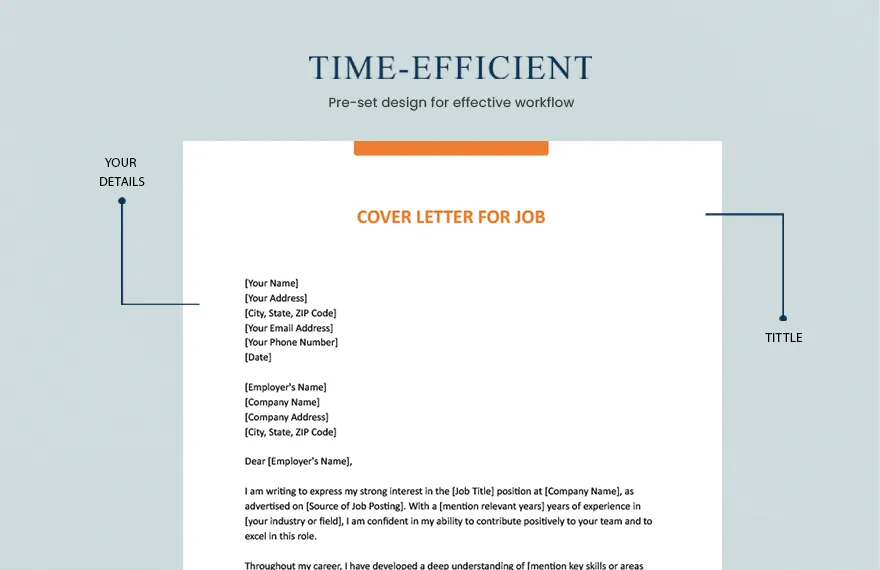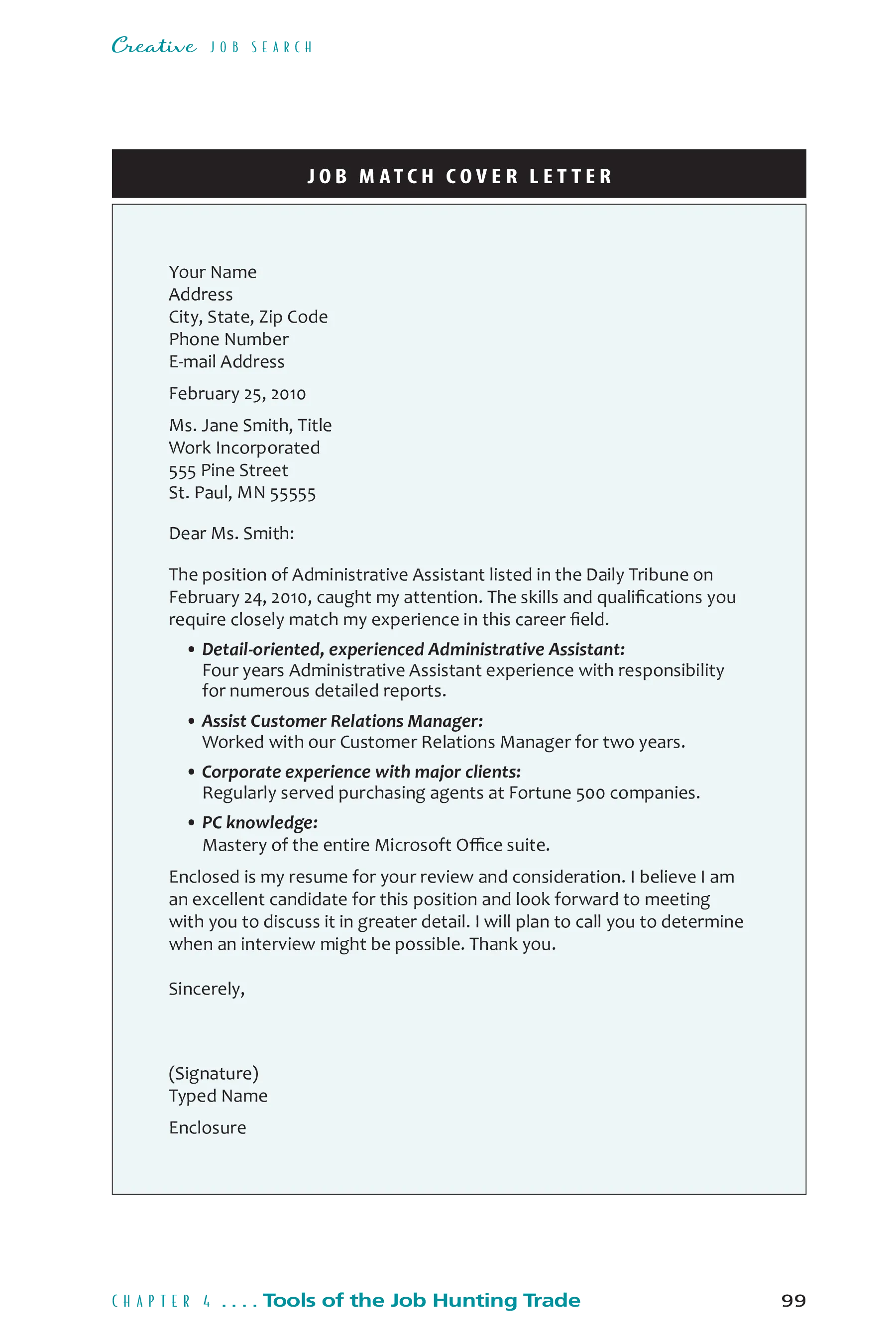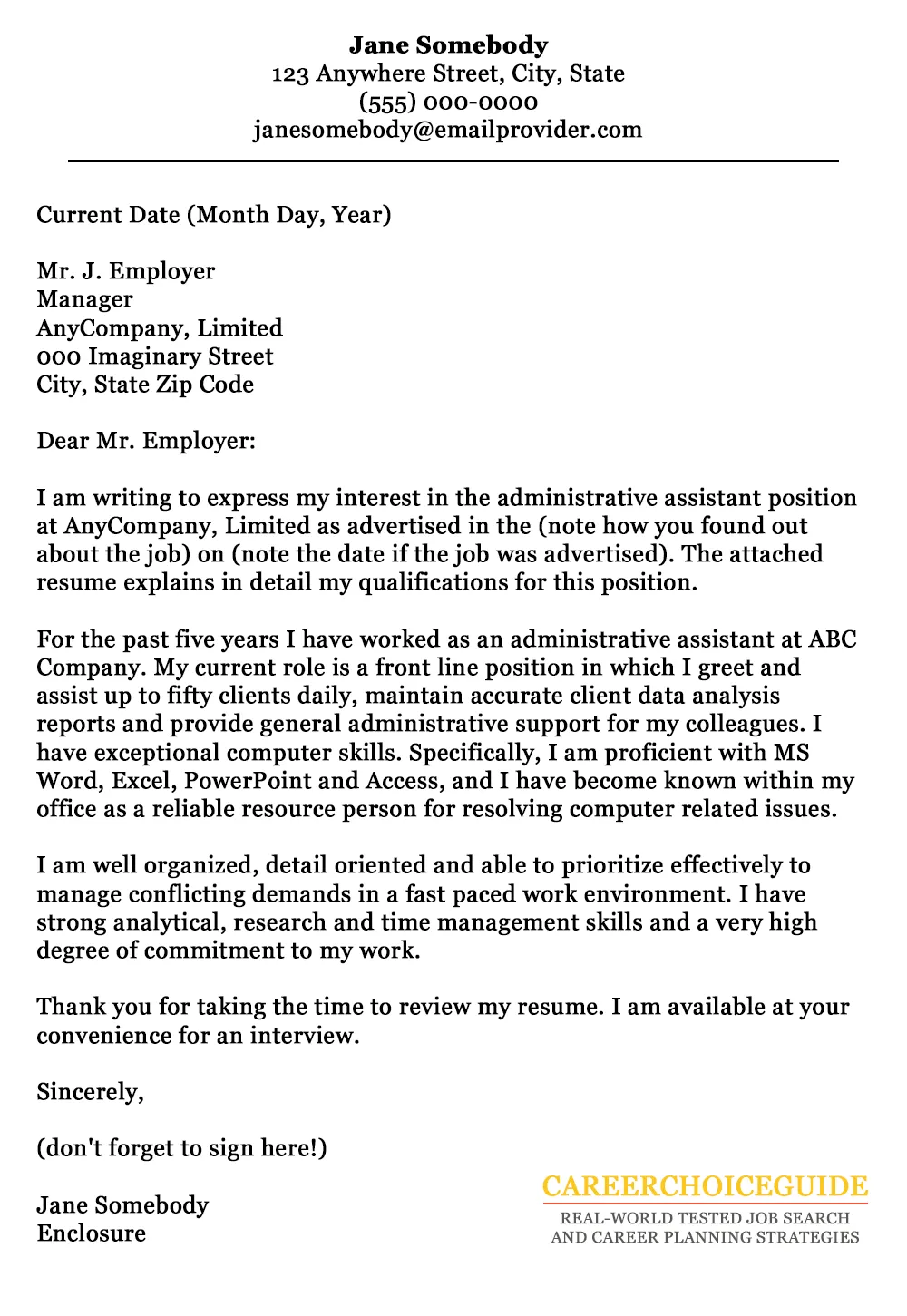The Importance of a Cover Letter
In the competitive landscape of job applications, a well-crafted cover letter is your first impression. It serves as a powerful introduction, complementing your resume by offering context and personality. It’s where you can express your genuine interest in the specific role and company, showcasing your communication skills and enthusiasm. Consider it an essential tool for increasing your chances of landing an interview. In a world where many candidates submit generic applications, a strong cover letter allows you to distinguish yourself, highlighting why you are uniquely suited for the opportunity. Failing to provide a professional cover letter means missing a chance to create a connection with the hiring manager, possibly leading to immediate rejection. Treat the cover letter with the importance it deserves. It can open doors to future success.
Why a Cover Letter Matters
A cover letter matters because it provides the opportunity to tell a story, connecting your skills and experiences to the job’s specific needs. It’s your space to explain your interest in the company and the role, demonstrating your research and enthusiasm. Unlike a resume, which is static, a cover letter can be tailored to each specific job, making it personal and relevant. Hiring managers often read cover letters before resumes, using them to quickly evaluate your suitability. A cover letter showcases your writing skills, a crucial asset in professional roles. A good cover letter makes a strong first impression, indicating professionalism and attention to detail, while a poor one can lead to rejection. It’s a key part of your job search, unlocking potential success.
Cover Letter vs. Resume

While your resume is a summary of your qualifications, skills, and experience, the cover letter presents a narrative that links those elements to the specific job you’re applying for. The resume offers a chronological or skills-based overview, whereas the cover letter lets you highlight your key strengths, explain your motivations, and demonstrate your understanding of the employer’s needs. The resume presents the facts; the cover letter is where you express your personality and demonstrate your writing abilities. The resume lists your accomplishments; the cover letter explains how those accomplishments align with the job requirements and the company’s objectives. The resume is focused on brevity; the cover letter gives the chance for more detail and personalization. Both are important, but they have different purposes. Use the cover letter to enhance your application.
Cover Letter Formatting
Formatting your cover letter correctly is key to a professional appearance. Use a standard, readable font like Times New Roman, Arial, or Calibri. Maintain a consistent font size (11 or 12 points) throughout the document. Set your margins to 1 inch on all sides. Your cover letter should be single-spaced with a blank line between each paragraph for easy reading. Keep the letter concise, ideally within one page. Break up large blocks of text into smaller, easily digestible paragraphs. Use clear headings and subheadings to organize your information. Use bullet points sparingly to highlight key achievements or skills. Ensure your letter is well-aligned, using a left-justified format. Avoid using excessive formatting or colors that could distract the reader. A clean and well-formatted cover letter demonstrates attention to detail. Think of using a template for consistency.
Essential Cover Letter Elements
A good cover letter contains these essential elements. Start with your contact information, followed by the date. Include the hiring manager’s name and title, if you have it. Begin with a professional greeting. In your opening paragraph, state the position you’re applying for and how you found the opportunity. In the body paragraphs, highlight relevant skills and experience. Tailor your examples to the job description. Quantify your achievements whenever possible. Show your enthusiasm for the company and role. In the closing, express your interest in an interview and include a call to action. Proofread the whole document before sending it. Mastering these elements helps you create a great first impression.
Contact Information

At the top, include your full name, address, phone number, and email. Make sure your email address looks professional, using your full name or initials. Be sure that this information is clearly visible and easy to find. Doing so makes it easy for the hiring manager to contact you. Double-check everything to prevent errors. A clean and accurate presentation shows your professionalism and attention to detail, showing you are prepared to get the job.
Greeting
Address the hiring manager by name. This demonstrates that you’ve done your research and are personalizing your application. If you can’t find the hiring manager’s name, use a general greeting like ‘Dear Hiring Manager’ or ‘Dear [Company Name] Hiring Team.’ Avoid impersonal greetings like ‘To Whom It May Concern.’ Researching the hiring manager shows initiative and can create a connection. Check for the correct spelling of their name, as a mistake can create a negative impression. Address them by their title (Mr., Ms., Dr.). A professional greeting sets a respectful tone.
Opening Paragraph
This is your chance to grab the reader’s attention. State the position you’re applying for and how you found the opportunity (job board, website, referral). Briefly mention why you’re excited about the role and the company. Keep it concise and engaging, highlighting your key qualifications. Avoid generic opening statements. Tailor it to the specific job. This paragraph should capture interest and create a strong first impression. Stating your intentions can help to show how your skills benefit the company.
Highlighting Relevant Skills and Experience

The body of your cover letter should focus on your skills and experience. Review the job description and identify key requirements. Select the most relevant skills and experiences to highlight, giving specific examples. Tailor your examples to match the job’s needs and avoid repeating your resume. Use action verbs to describe your accomplishments and quantify your achievements. Connect your skills and experiences to the employer’s needs. Show that you have the qualifications they are looking for. This section should demonstrate your value.
Tailoring Your Cover Letter
One of the most important steps is tailoring your letter to each job. Avoid a generic template. Personalize your letter for every application. Research the company and role to understand their needs and values. Analyze the job description and find the key skills and qualifications. Use this to highlight relevant experience and demonstrate how your skills meet their needs. Mention specific projects or achievements that prove your ability to succeed. Tailoring shows your genuine interest and your time. This increases your chances of a positive impression.
Researching the Company
Before writing, research the company. Visit their website, read their ‘About Us,’ and explore social media. Learn about their mission, values, products, services, and recent news. Know their industry, target market, and competitors. Showing this knowledge in your cover letter shows your genuine interest. It also helps you tailor your application, highlighting how your skills match their needs. Including details about the company shows you have done your homework and taken the time to understand their business, which is important to making a great first impression. Think about how to align your experiences with the company’s values.
Addressing the Job Description

Carefully review the job description to find the key skills, qualifications, and responsibilities. Use it as your guide, highlighting the most relevant experiences. Align your skills with the requirements, giving specific examples. Use keywords from the job description in your letter, but avoid keyword stuffing. Tailoring your letter shows the hiring manager that you understand the role and are a good fit. Addressing the job description makes you an attentive applicant.
Quantifying Your Achievements
Quantify your achievements with numbers, data, and specific results. For example, instead of saying ‘Improved customer satisfaction,’ write ‘Increased customer satisfaction by 15% in six months.’ Use metrics to show the impact of your contributions and the value you brought to previous roles. Quantifiable data makes your accomplishments more credible. Quantifiable achievements can include sales figures, cost savings, and project completion numbers. These demonstrate your ability to deliver results. Provide a clear summary of your accomplishments. Numerical data helps demonstrate the depth of your contributions and your ability to deliver results.
Providing Specific Examples
Instead of simply listing your skills, offer specific examples of how you’ve used them in real situations. Use the STAR method (Situation, Task, Action, Result) to structure your examples. Describe the situation, explain your assigned task, detail the actions you took, and then show the results. Specific examples help the hiring manager understand your capabilities. They add credibility and show your ability to use your skills. They offer proof of your qualifications. This approach makes your cover letter more compelling, showing your strengths in action. They show how you solve problems and the impact you made.
Showcasing Personality

Your cover letter should be professional, but also allow your personality to show through. Use a professional yet friendly tone, and show your enthusiasm for the role and the company. Briefly mention interests or experiences that match the company’s values. Maintain professionalism while showing your uniqueness. Adding personality can help you stand out and make your application more memorable. Your personality can show your enthusiasm and dedication. It makes you feel more real.
Writing a Strong Closing
The closing paragraph is your last chance to make a lasting impression. Reiterate your interest in the position and the company. Include a clear call to action, such as expressing your interest in an interview or stating your availability for a follow-up. Thank the hiring manager for their time and consideration. A strong closing demonstrates enthusiasm and professionalism, which will help your application stand out. Keep it concise and action-oriented. The goal is to encourage the hiring manager to contact you for an interview.
Expressing Enthusiasm
Showing enthusiasm is vital. Make your passion for the opportunity clear. Show genuine interest in the role and company. Avoid generic phrases, and instead express your excitement in a specific and genuine way. Briefly explain what aspects of the role interest you the most. Tailor your enthusiasm to the specific job and the company’s values. A display of enthusiasm will make your cover letter more memorable. Make sure you convey your eagerness. Showing your enthusiasm can capture the hiring manager’s attention. It shows you are invested in the position, which can give you an edge.
Call to Action

Include a clear call to action in your closing paragraph. State your interest in an interview and make it easy for the hiring manager to take the next step. For example, say, ‘I am eager to discuss my qualifications further in an interview.’ A direct call to action encourages the hiring manager to take the next step. This shows that you are proactive and confident in your abilities. Your intention is to help the hiring manager reach out to you for an interview. Making it easy is important. The call to action increases your chances of an interview.
Proofreading and Editing
Proofreading and editing are essential. Carefully review your cover letter for any errors. Check for grammar, spelling, and punctuation mistakes. Read your letter aloud to catch any awkward phrasing or run-on sentences. Make sure the language is clear and easy to understand. Have someone else review your cover letter. Proofreading helps ensure your cover letter is professional. Errors can damage your chances. Always double-check all of the basics before submitting.
Checking for Grammar and Spelling Errors
Check your cover letter for any grammar or spelling errors. These can undermine your credibility and indicate a lack of attention to detail. Use a grammar and spell checker, but do not depend on them; proofread carefully. Review each sentence for clarity, accuracy, and proper punctuation. Correct all typos or grammatical mistakes. A polished, error-free cover letter shows professionalism and respect for the hiring manager’s time. Proofreading tools should not replace manual review. Be sure you can identify and correct all mistakes. Grammar and spelling errors can create a bad impression.
Seeking Feedback
Ask a trusted friend, family member, or career advisor to review your cover letter. A second pair of eyes can catch errors you might have missed. Ask for feedback on the clarity, structure, and overall effectiveness. Pay attention to any suggestions for improvement. Revise based on their feedback. Seeking feedback shows you want to present your best self. A second opinion can help you identify areas for improvement. Incorporate helpful feedback to make it more effective.
Following Up
If you haven’t heard back within a reasonable time (usually a week or two), follow up with the hiring manager. Send a polite email to inquire about the status of your application. Briefly reiterate your interest in the position. Thank the hiring manager for their time. Following up demonstrates initiative. Ensure your follow-up is polite. If you are a good fit, following up can keep your application at the top. This shows that you are keen.
Sending Your Application
Carefully review the instructions for submitting your application. Follow all instructions, including file formats and naming conventions. Submit your cover letter and resume in the specified format (usually PDF). Double-check that all documents are attached. Proofread your email before sending it. Ensure that your application is complete. Sending your application correctly increases the chances of being considered. Following all instructions shows attention to detail and professionalism. Always check the submission process. This is your final opportunity to present yourself in a professional way.
Cover Letter Examples
Review cover letter examples for guidance. Search online for examples relevant to your industry or role. Pay attention to the structure, tone, and language. See how others highlight their skills and experience. Use these as inspiration. Tailor the examples to your background. Cover letter examples provide templates. They show how to structure a cover letter effectively. They can help you visualize the final product and demonstrate your strengths.
Cover Letter Mistakes to Avoid
Avoid these common mistakes. Avoid mistakes. Tailor the cover letter to each job opportunity. You should always proofread. Avoid the common mistakes and increase the likelihood of your application being noticed by the hiring managers.
Generic Content
Avoid using a generic, one-size-fits-all cover letter. Tailor your letter for each job. Personalize your content to the opportunity, highlighting the skills and experiences. Focus on what makes you a strong candidate for the job. Avoid the common mistake and create a personal letter.
Typos and Grammatical Errors
Proofread your cover letter for any typos or errors. These undermine your credibility. Run a grammar and spell check. Errors convey a lack of attention to detail. Proofread to identify errors. Review and correct them. Make sure that your cover letter is polished and error-free.
Not Tailoring to the Job
Do not submit a cover letter that isn’t tailored to the job. Personalization is key. Address the key requirements and highlight how your skills align. Tailoring shows you care. It demonstrates that you have researched the company and the role. It is a sign of preparation and attention to detail.
Making It Too Long
Keep your cover letter concise, with a perfect length of one page. Avoid a long, rambling letter. Conciseness increases its impact. Make it easy to read and understand. A long cover letter can lose the reader’s interest. Focus on the most important information. Be brief, clear, and relevant. Ensure that the hiring manager is not overwhelmed by information.
Ignoring the Instructions
Always follow application instructions. If the job posting specifies a format, adhere to it. If there are instructions, be sure to follow them. Ignoring instructions makes your application appear unprofessional. This can lead to your application being rejected. Follow instructions. Attention to detail is important in job applications. Make sure you address the specifics in the instructions.
Final Thoughts
A great cover letter is essential for a strong first impression and getting an interview. By following these tips, you can write a cover letter that highlights your skills, experience, and enthusiasm. Remember to tailor it to each job, highlight key achievements, and proofread. By crafting a compelling cover letter, you’ll boost your chances of being noticed and getting the job. Good luck with your job search!.
